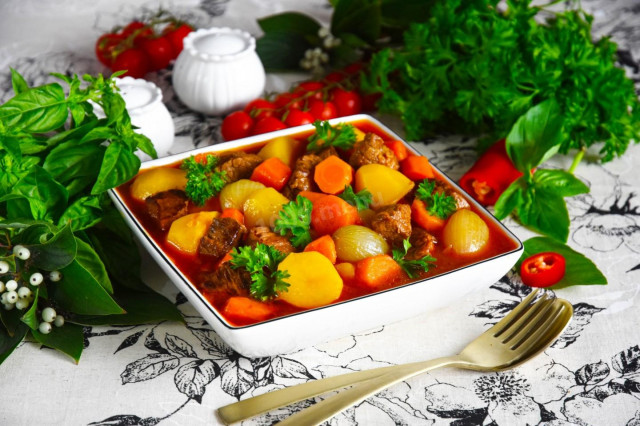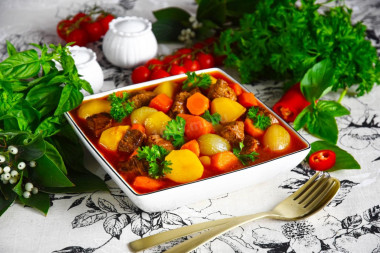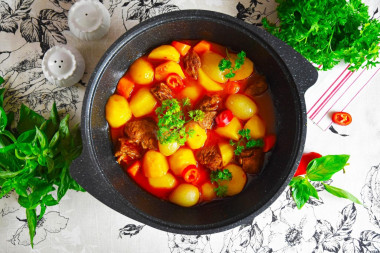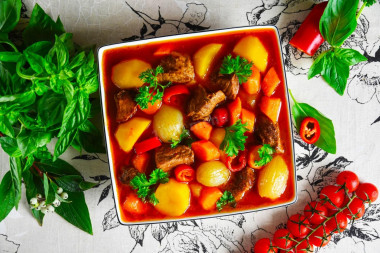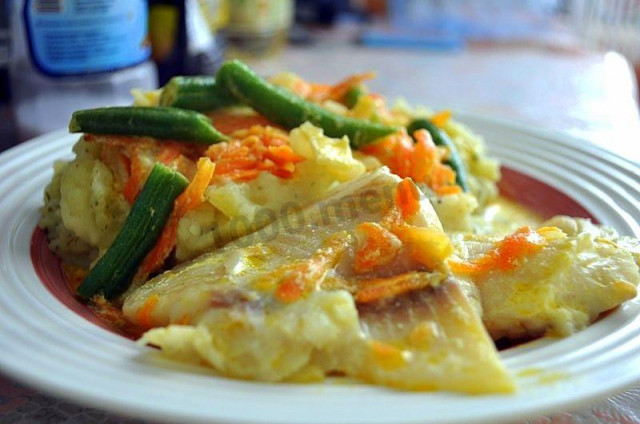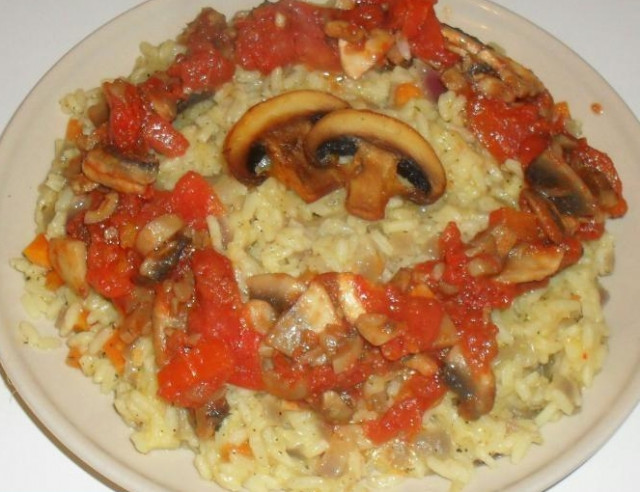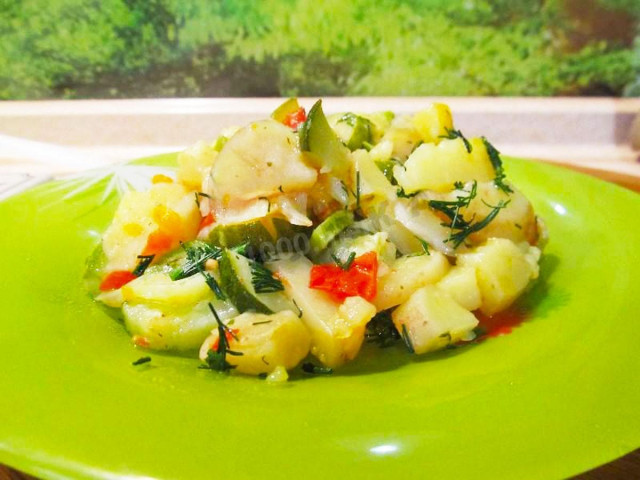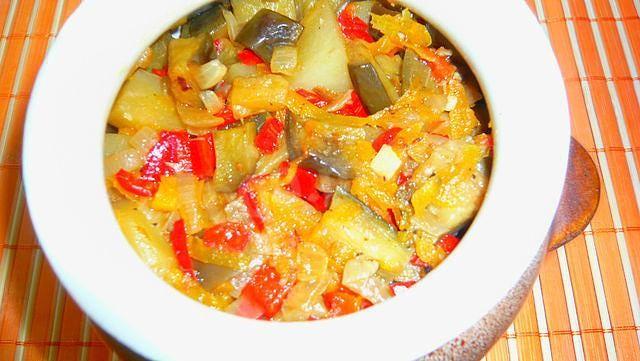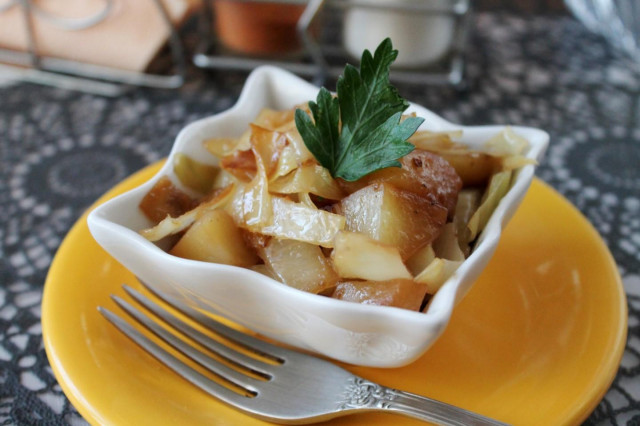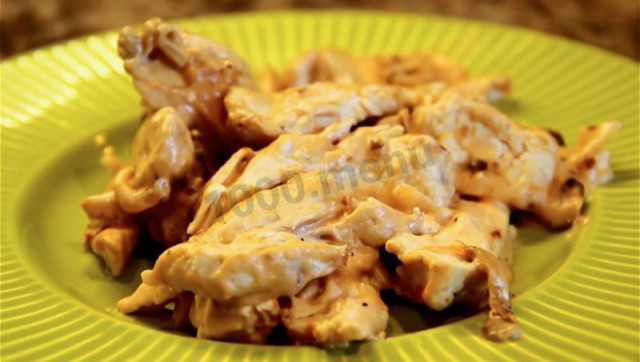Composition / ingredients
Step-by-step cooking
Step 1:
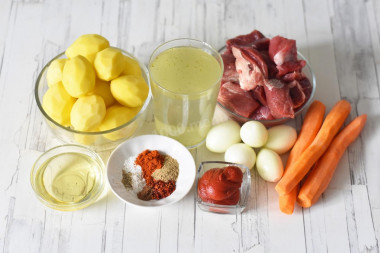
How to make beef roast in a cauldron on the stove? Very simple. First, prepare the necessary ingredients according to the list. Tomato paste can be replaced with ketchup or fresh tomatoes, cut into pieces or crushed in a blender. Meat broth can be replaced with chicken or vegetable broth or ordinary water.
Step 2:
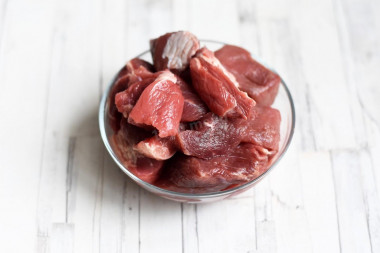
Wash the beef pulp, dry it and cut it into portions. You can take meat from any part of the carcass. I have a shoulder blade.
Step 3:
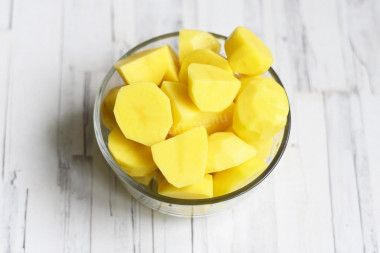
Wash and peel the potatoes. Cut large tubers into medium cubes. Leave the small potatoes whole.
Step 4:
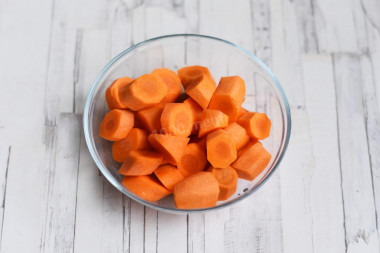
Cut the carrots into medium pieces.
Step 5:
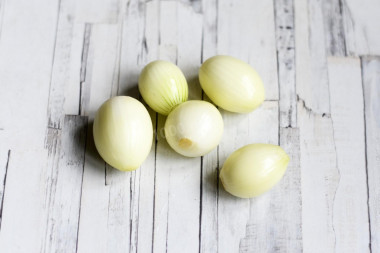
Cut the onion into half rings. If the bulbs are small, like mine, you can add them whole. They're going to boil a lot anyway.
Step 6:
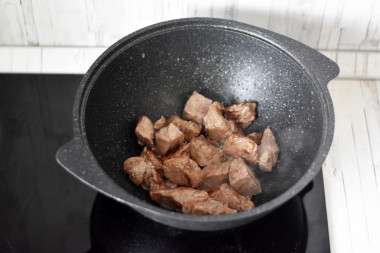
Heat the vegetable oil in a cauldron, lay out the meat and fry on high heat until golden brown.
Step 7:
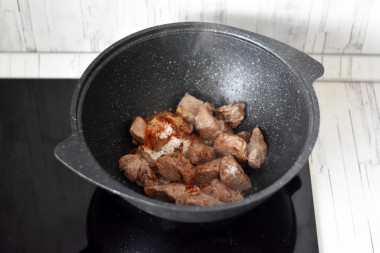
At the end, add salt, pepper and spices for the meat. Ready-made spices can be replaced with paprika, hops-suneli, nutmeg. If you use ready-made spice mixes, be sure to read the composition on the package. Often, salt is already present in such mixtures, take this into account, otherwise you risk over-salting the dish.
Step 8:
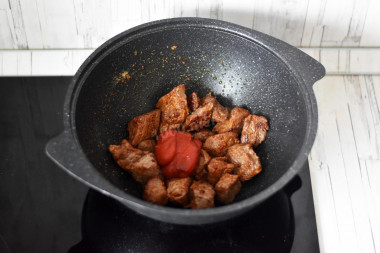
Add the tomato paste, mix with the meat and fry, stirring, for a couple of minutes.
Step 9:
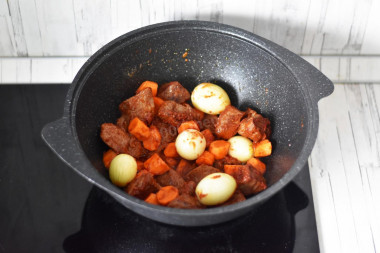
Add onions and carrots to the cauldron. Fry everything together, stirring, for 2-3 minutes.
Step 10:
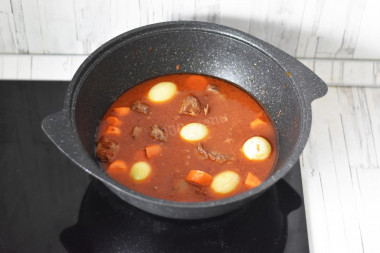
Pour hot broth or water into the cauldron so that it completely covers the meat.
Step 11:
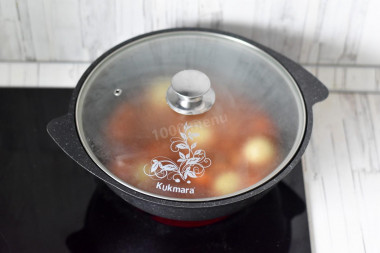
Cover the cauldron with a lid and simmer for 1 hour.
Step 12:
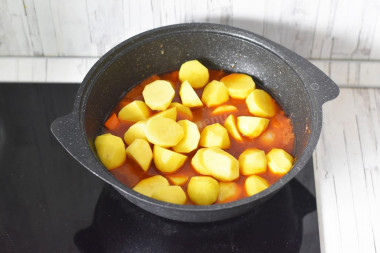
When the meat becomes soft, add the sliced potatoes to the cauldron and mix everything again.
Step 13:
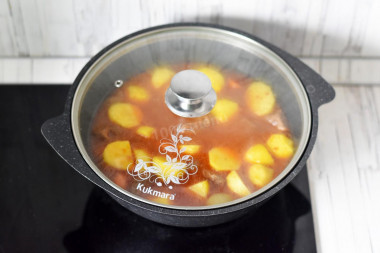
Simmer the roast for about 30 minutes until all the ingredients are ready. Such a roast can be cooked not only on the stove, but also on the fire. Bon appetit!
For this recipe, it does not matter which part of the carcass to choose, since it will still become soft during cooking.
Beef can be replaced with any other type of meat that you like better. But keep in mind that the cooking time, as well as the taste and calorie content of the dish will change. Pork and lamb tend to be fatter than beef, and chicken fillet or turkey are leaner. At the same time, the cooking time depends not only on the type of meat, but also on which part of the carcass is used and how old or young the meat is.
Since the degree of salinity, sweetness, bitterness, sharpness, acid, burning is individual for everyone, always add spices, spices and seasonings, focusing on your taste! If you put some of the seasonings for the first time, then keep in mind that there are spices that it is especially important not to shift (for example, chili pepper).
Caloric content of the products possible in the composition of the dish
- Onion - 41 kcal/100g
- Ripe potatoes - 80 kcal/100g
- Baked potatoes - 70 kcal/100g
- Mashed potatoes - 380 kcal/100g
- Boiled potatoes - 82 kcal/100g
- Potatoes in uniform - 74 kcal/100g
- Fried potatoes - 192 kcal/100g
- Melted beef fat - 871 kcal/100g
- Fat beef - 171 kcal/100g
- Lean beef - 158 kcal/100g
- Beef brisket - 217 kcal/100g
- Beef - okovalok - 380 kcal/100g
- Beef - lean roast - 200 kcal/100g
- Beef shoulder - 137 kcal/100g
- Beef - ribs - 233 kcal/100g
- Beef - ham - 104 kcal/100g
- Beef - tail - 184 kcal/100g
- Boiled ham - 269 kcal/100g
- Beef corned beef - 216 kcal/100g
- Carrots - 33 kcal/100g
- Dried carrots - 275 kcal/100g
- Boiled carrots - 25 kcal/100g
- Ground black pepper - 255 kcal/100g
- Vegetable oil - 873 kcal/100g
- Tomato paste - 28 kcal/100g
- Salt - 0 kcal/100g
- Water - 0 kcal/100g
- Spices dry - 240 kcal/100g

